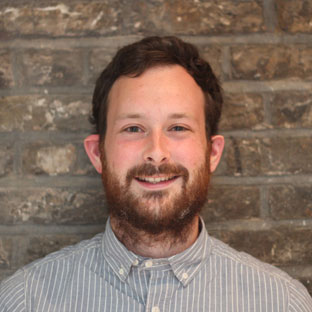This is a guest blog by Channelling Talent co-author Siobhan McAndrew.
We generally think of creativity as being down to individual talent, hard work, or even fate. This fits well with an optimistic worldview. To argue that ‘it’s not what you know, it’s who you know’ sounds resentful, a product of ‘tall poppy syndrome’.
However, network science using the tools of social network analysis (SNA) has generated rich evidence of how social networks enable, mediate, and generate talent and creativity. The University of Chicago network scientist Ronald Burt studied idea generation in a large technology company, finding that good ideas emerged from brokers bridging different networks, but spread most thoroughly within groups.
An important study by UCLA sociologist Gabriel Rossman with others, using the massive data contained within the Internet Movie Database, examined collaboration in movie-making. Being more connected in the industry is related to success at the Oscars when connections are to the prestigious rather than simply more numerous. In other words, selection into elite networks is critical for individual accomplishment.
So why are networks so critical? Of course, talent and status attract network connections: people like to be associated with gifted and successful people. But networks equally foster creative output. We learn how to work creatively from others, whether formally at school and university, or informally from friends and colleagues.
Music provides an ideal terrain on which to explore how networks work. Like other creative industries, we know that it can be notoriously hard for individuals to find recognition and reward. We also recognise that certain places at certain times are particularly creative and successful: a ‘scene’ develops, feeding off the interaction of its members'.
Some pool resources to perform music or exhibit their works as a collective and thereby build audiences. Of course, musicians and artists can also be extremely competitive both within their art world and when competing with other movements: it is hardly the case that ‘community’ and connectivity are always beneficial.
Being heavily embedded can lead to inflexible groupthink, while disagreement between groups can also provoke creativity: Dan Halgin and others have investigated how hostility between hip-hop artists found creative expression through diss songs in rap.
I and a number of academic colleagues together with the RSA have explored these ideas recently through a set of projects with a focus on music worlds. In an analysis of the networks of British composers born since 1870, Martin Everett and I find that being more connected leads to more success in terms of having works performed at the BBC Proms. This diagram locates the most connected composers towards the centre, with each node scaled by the number of works they had performed at the Proms. While those towards the centre tend to have more works performed, we also find some highly productive marginal figures working in ‘light music’, such as Eric Coates and Montague Phillips, while the slightly off-centre Benjamin Britten has had more works performed than the intensely community-minded Ralph Vaughan Williams.
In newly-published work with Nick Crossley, Roberta Comunian, Paul Widdop, Fay Hield, Susan O’Shea and others, a number of music worlds are investigated: punk and post-punk, jazz, classical music, and folk.
This week, the RSA released the Channelling Talent documentary, featuring Susan O’Shea, a musician and researcher in our department. In collaboration with RSA, Jonathan Schifferes, Jocelyn Cunningham and I have also considered the literature on networks and talent alongside a number of case studies in the Channelling Talent report.
The research literature in this area is rich and growing all the time, with important implications for policy strategy and the design of interventions. One important area is the need to democratise access to elite networks – clearly easier said than done.
Much policy and commentary has concerned itself with secondary education and fairness in undergraduate admissions. But the issue is wide-ranging, including access to creative training, postgraduate study, the professions, and other rewarding careers including in the creative sector.
We need multiple entry points to counterbalance biases arising from early selection into elite networks and institutions, and the preference of recruiters and gatekeepers to select similar or familiar types. Initiatives such as AccessProfessions.com are an important step in the right direction.
Secondly, academic and policy researchers alike should become more aware of the possibilities of SNA as a set of tools to examine how networks operate. There has been great interest for some years now in the fostering of social capital and vibrant communities. But often the study of ‘communities’ is fuzzy, assuming that members co-operate and that their collective action is benign.
Accordingly, it tends to neglect competition, conflict, structural differences within and between different social worlds, and the importance of where participants are located in a network for what they can and cannot do.
SNA is enormously promising for the study of business and political networks, culture and creativity, and generation of scientific knowledge in particular. The RSA has done very important work in a policy and social action context through its Connected Communities programme.
We hope that academic and policy worlds more broadly will recognise the immense opportunities a relational and network approach can offer in academic research and policy strategy alike.
Siobhan McAndrew is Marston Research Fellow at the Cathie Marsh Institute for Social Research, University of Manchester. Her work on networks and music worlds was funded by ‘Music Communities’, AH/J006807/1, an Arts and Humanities Research Council project under the Research Councils UK cross-council ‘Connected Communities’ programme.



Be the first to write a comment
Comments
Please login to post a comment or reply
Don't have an account? Click here to register.